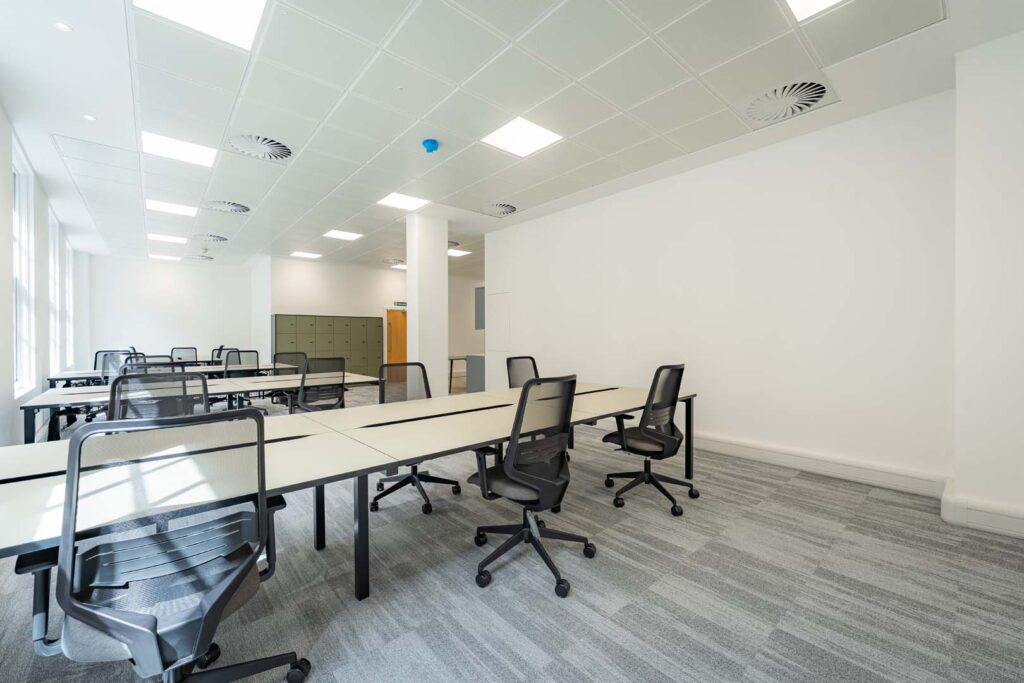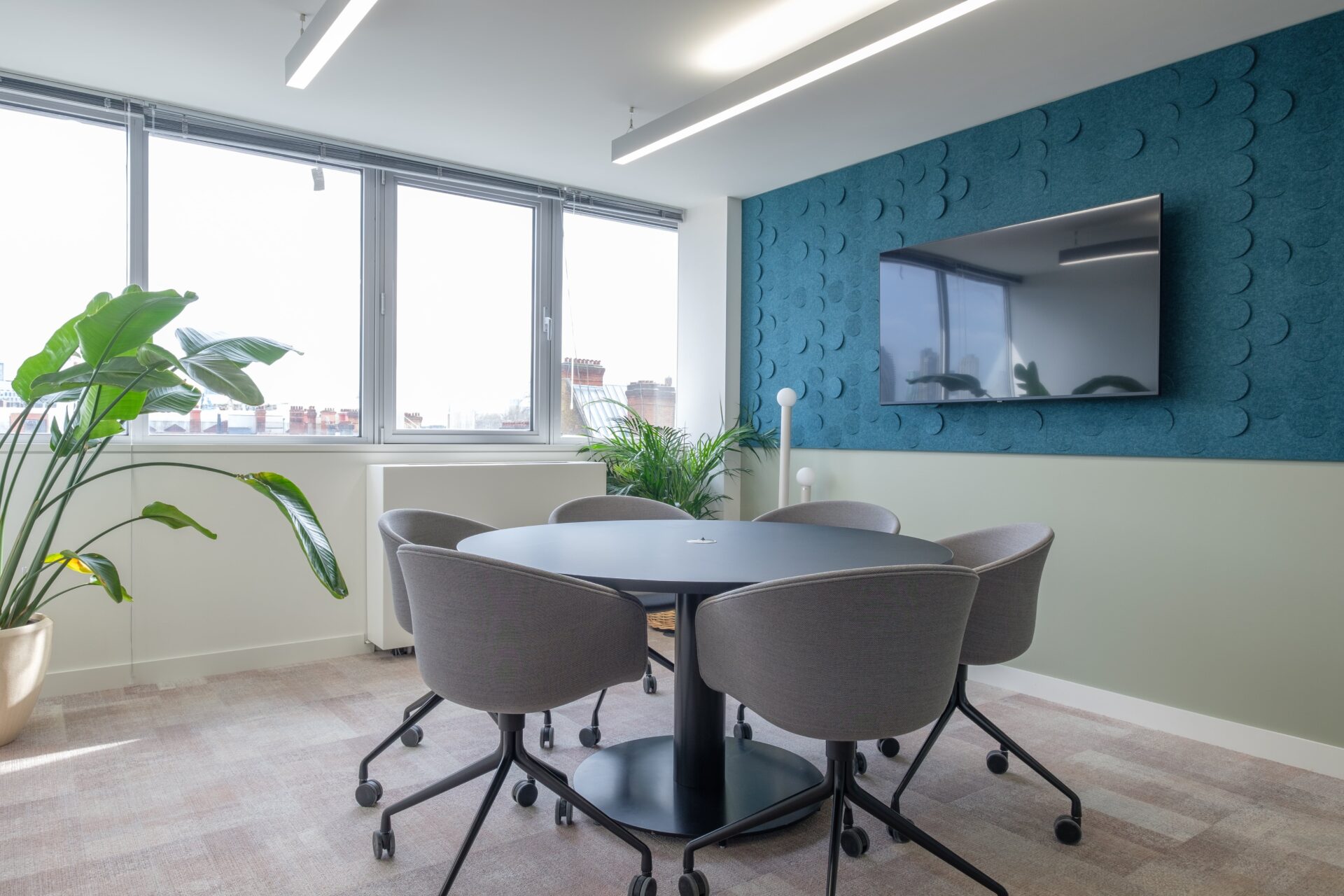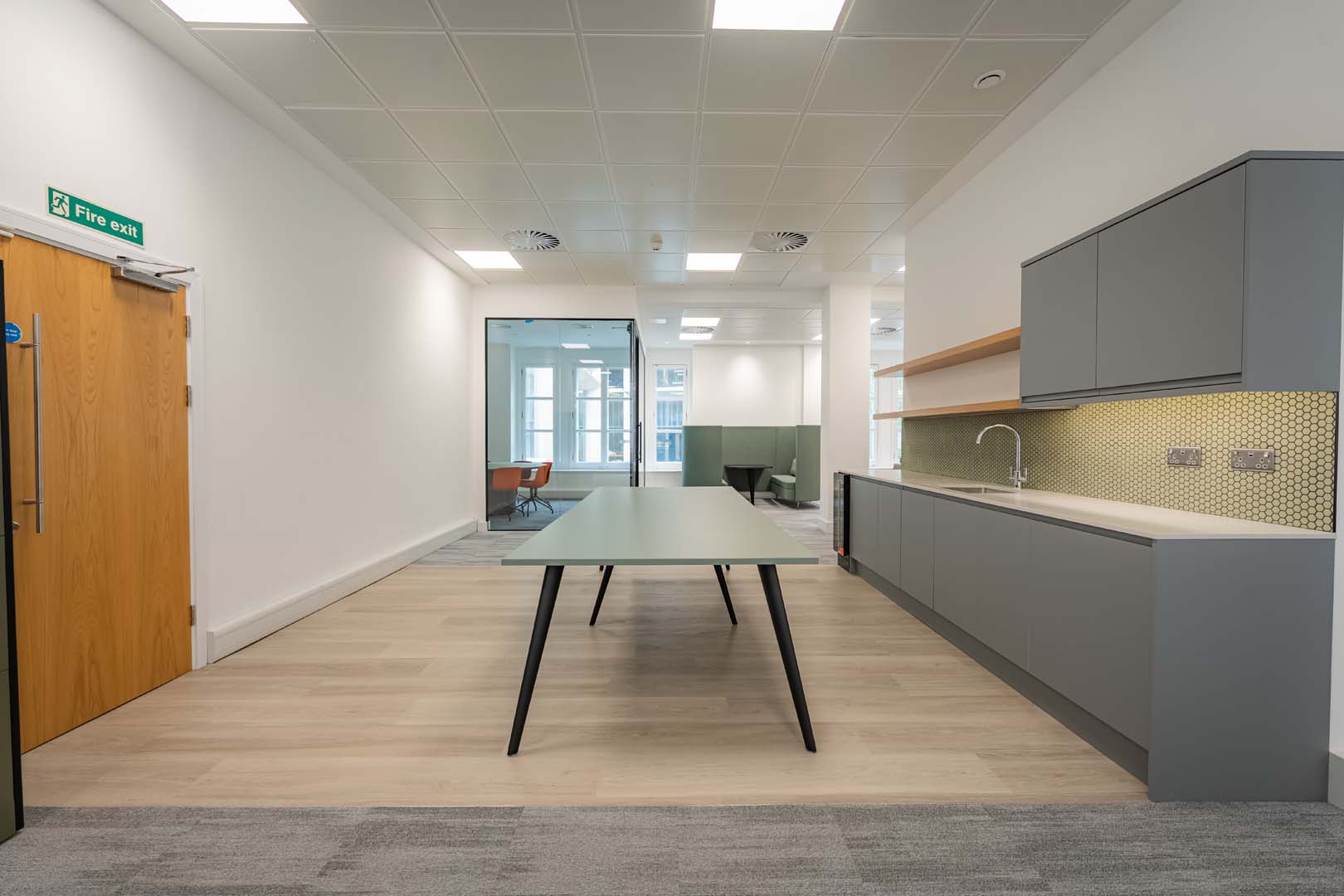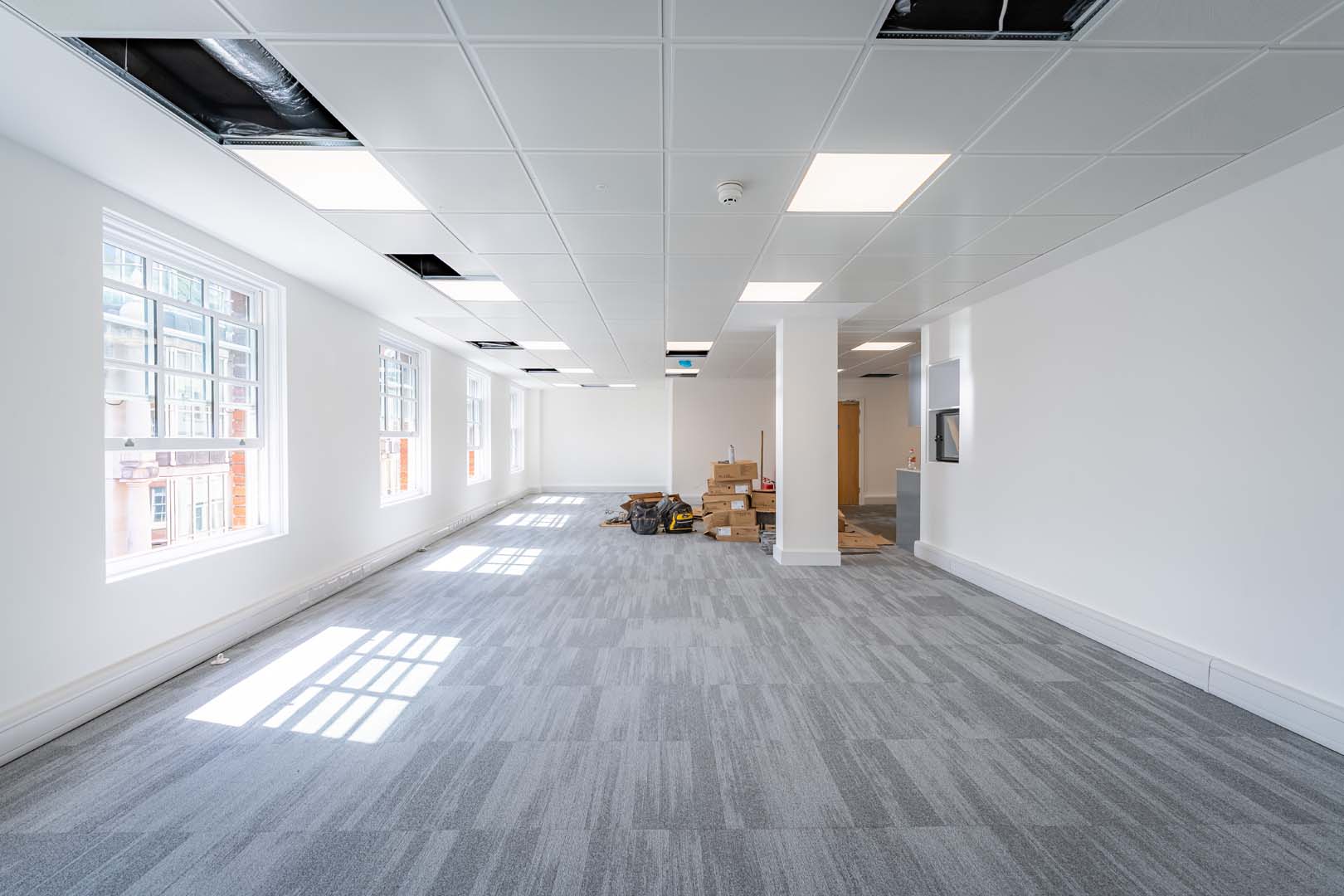For many UK businesses, an office refurbishment isn’t just about fresh paint or modern furniture, it’s also a chance to unlock hidden tax savings.
Recent changes in commercial property taxation make it more important than ever to understand how capital allowances work, especially for London-based companies.
Capital allowances allow businesses to offset refurbishment costs and renovation expenses against taxable profits. That means items like office furniture, lighting systems, air conditioning, or even integral features such as electrical systems and sanitary fittings could reduce your tax liability if claimed correctly.
But here’s the catch: not every expense qualifies. To make the most of these tax benefits, companies need to identify qualifying expenditure, categorise costs properly, and ensure compliance with HMRC’s latest tax regulations. Done right, this can turn a necessary refurbishment project into a smart tax-saving strategy.
Office Refurbishments: Your Gateway to Big Tax Relief
The rules of commercial property taxation are changing fast, and they matter more than ever. From April 2025, the capital gains tax allowance will fall by over 75% (from £12,300 to just £3,000). For businesses planning an office refurbishment, this shift makes understanding capital allowances not just useful, but essential.
So, what does this mean in practice?
Capital allowances allow companies to offset refurbishment and renovation costs against taxable profits. That includes qualifying capital expenditures such as plant and machinery, office furniture, air conditioning, lighting systems, electrical installations, and sanitary fittings. In short, the money you spend improving your office could directly reduce your tax bill.
These allowances form a cornerstone of the UK tax system, designed to encourage reinvestment in business assets and infrastructure. When approached strategically, office fit-outs and refurbishments don’t just improve your workspace, they unlock immediate and long-term tax savings.
The Annual Investment Allowance (AIA)
One of the most powerful tools available is the Annual Investment Allowance (AIA). This allows businesses to claim 100% tax relief in the same tax year on eligible expenditures (up to £1 million). The result? Significant cash flow improvements and the ability to reinvest quickly into growth.
Compliance and Careful Planning
Of course, to access these savings, businesses need to follow HMRC rules closely. That means:
- Keeping detailed records of refurbishment costs.
- Categorising qualifying expenditure correctly (e.g., main pool vs. special rate pool).
- Seeking guidance from a qualified tax advisor or tax professional.
With proper planning, businesses can ensure full compliance, minimise tax liability, and maximise the financial return from their refurbishment projects.
Beyond the Basics
While the AIA is the headline benefit, other allowances such as the main pool (18% reducing balance) and special rate pool (6% reducing balance) also apply to different types of assets. Understanding which costs fall into which category ensures no relief is left unclaimed.
The Big Picture
Handled correctly, capital allowances can lead to substantial savings. Instead of being a sunk cost, your refurbishment project becomes a smart financial move, freeing up funds for further investment, supporting business growth, and building resilience in a changing tax landscape.
The Real Numbers: How Much Can You Actually Save?
Most business owners think about refurbishment in terms of cost: new furniture, fresh design, better space for the team. But there’s another layer often overlooked, the initial tax savings that can transform your return on investment.
By claiming capital allowances, businesses can offset refurbishment expenses against taxable profits, sometimes up to 100% of qualifying costs. That means the money you’re already spending on improvements can directly reduce your tax bill.
And here’s the real kicker: refurbishments often deliver better tax advantages than building from scratch. On average, around 40% of costs in a new office build may qualify for relief. But with refurbishment projects, that figure can jump to as high as 80%.
So while you’re upgrading your office space, you’re also unlocking a powerful financial benefit, turning what might feel like a big expense into a long-term saving strategy.
Maximising the Annual Investment Allowance for Refurbishments
When it comes to tax relief on office refurbishments, the Annual Investment Allowance (AIA) is your strongest ally.
- Businesses can claim up to £1 million in qualifying plant and machinery each year.
- The big win? You get 100% relief in the same tax year, instead of spreading deductions out over time.
- That means instant cash flow benefits and the ability to reinvest savings straight back into your business.
Why It Matters
Most capital allowances give you tax relief gradually, year by year. The AIA changes the game by delivering immediate savings. For example:
- Refurbishment costs such as office equipment, air conditioning, and lighting systems can be written off straight away.
- Instead of waiting years to recover your costs, you reduce your tax bill now.
Other Allowances to Know
The AIA isn’t the only option. Depending on your project, you may also benefit from:
- First-year allowances – offering accelerated tax relief on certain investments.
- Full expensing – allowing 100% deduction for qualifying capital equipment in the year of purchase.
- Other year allowances – providing flexibility if your spending spans multiple tax years.
Timing Is Everything
Maximising the AIA often comes down to strategic timing. By planning when you make your investments, you can:
- Avoid exceeding the £1m threshold in a single year.
- Spread larger projects across financial years for maximum relief.
- Improve short-term cash flow to support growth or reinvestment.
The Complex Rules of Expenditure, Made Simple
Not all refurbishment costs are treated equally for tax purposes. Every type of spending falls into its own category, and each category comes with different rules on how and when you can claim relief. Getting this right is crucial, misclassification can mean missing out on valuable allowances or claiming incorrectly.
The first distinction businesses need to understand is between repairs, improvements, and capital expenditure. Repairs are often treated as revenue expenses and deducted differently, while improvements and qualifying plant and machinery fall under capital allowances. Knowing which is which can have a major impact on your tax position.
Then there’s the question of how much you can claim each year. For most plant and machinery or general fixtures and fittings, the allowance is 18% per year on a reducing balance basis. For integral features, things like electrical systems, heating, air conditioning, lifts, or escalators, the rate drops to 6% per year.
This distinction might sound minor, but it makes a big difference over time. For example, moveable partitions, suspended ceilings, specialist lighting, and even professional fees related to design or legal services usually fall into the higher 18% category, giving you faster relief. By contrast, integral features take longer to write down, meaning you’ll see the tax benefit spread out across more years.
In simple terms: proper categorisation at the planning stage can accelerate your tax relief and improve cash flow, while mistakes can slow down or reduce the benefits entirely.
Timing Strategies That Could Save You Thousands
When it comes to office refurbishments, timing can be just as valuable as the work itself. The point at which you carry out improvements can dramatically change the amount of tax relief you’re entitled to claim.
From April 2025, capital gains tax on carried interest will move to a single 32% rate, a reminder that tax laws are constantly shifting. By planning your refurbishment around these changes, you can ensure your business stays one step ahead.
Financial year planning is particularly important if your refurbishment spend is close to the £1 million AIA threshold. In many cases, spreading costs across two financial years helps you maximise allowances without exceeding the cap. Of course, this needs to be balanced with practical considerations like contractor availability and project deadlines.
One final point: not every cost counts. For example, fees for planning permission don’t qualify for capital allowances, so it’s worth documenting exactly what’s being spent, and when, to support an accurate claim.
The takeaway? Plan early, document carefully, and align your project timeline with tax deadlines. By doing so, you’ll maximise relief and keep more cash in your business.
Why You Need a Tax Professional on Your Side
When it comes to capital allowances, expert guidance isn’t optional, it’s essential. The rules are complex, and a qualified tax advisor can make the difference between a successful claim and missed opportunities.
By involving a professional early, businesses can:
- Plan the timing of expenditure more strategically.
- Categorise costs correctly from the start.
- Spot additional relief opportunities that might otherwise be overlooked.
In short, engaging a tax professional isn’t just about compliance—it’s about maximising every pound of potential savings.
Why Tax-Efficient Refurbishment Matters More in London
In London’s expensive commercial property market, even small tax savings add up fast. For many businesses, refurbishment is far more cost-effective than relocating, especially when you factor in the capital allowances available.
With proper tax planning, refurbishment projects can deliver stronger returns than operational improvements alone. In a city where property costs are among the highest in the world, that difference can be worth hundreds of thousands of pounds..
Future-Proofing Your Tax Strategy
Tax laws never stand still, and neither should your strategy. From April 2025, capital gains tax will shift to a single 32% rate, a clear reminder that today’s allowances may not look the same tomorrow.
The businesses that thrive are those that plan ahead. That means:
- Keeping detailed records of every refurbishment expense.
- Documenting plant and machinery installations from day one.
- Reviewing your tax position regularly with a qualified advisor.
By doing this, you don’t just stay compliant, you also ensure you’re claiming every allowance available and turning regulation changes into opportunities, not risks.
Why Good Record-Keeping Is Your Best Defence
Strong documentation is the backbone of a successful capital allowances claim. HMRC has become stricter on evidence, so keeping clear records from the very start of your refurbishment is essential.
The most useful documents include:
- Contractor invoices – clearly showing the nature of the work carried out (e.g. construction, office fit outs).
- Architectural drawings and plans – highlighting installations and integral features.
- Professional valuations – where appropriate, to confirm the value of assets and works completed.
Investing in good record-keeping pays off twice: first by maximising the allowances you can claim, and second by protecting your business if HMRC reviews your position later.
Specialist firms in capital allowances can also guide you on what to keep, and help set up systems that ensure ongoing compliance without adding unnecessary admin.
Turning Office Projects Into Long-Term Financial Wins
Office refurbishments aren’t just about creating a better workspace; they’re about building a stronger financial future. When used strategically, capital allowances can fund further improvements, fuel business expansion, and keep cash reserves healthy for what’s next.
The key is to view refurbishment as more than an expense. With tools like the Annual Investment Allowance, structures and buildings allowances, and recent incentives such as the super deduction, refurbishments become a way to save now and strengthen your business for the long term.
For London-based companies, the stakes are even higher. High property costs make every percentage of tax relief worth thousands of pounds, sometimes more. Acting strategically, with the right planning and professional guidance, ensures you capture this value instead of leaving it on the table.
But here’s the catch: tax legislation is always evolving. The opportunities available today may not be here tomorrow. Businesses that act early and plan smartly are the ones that will turn necessary refurbishments into a powerful long-term financial strategy.
Your office fit out isn’t just a project, it’s an opportunity. The question is: will you use it to its full potential?








